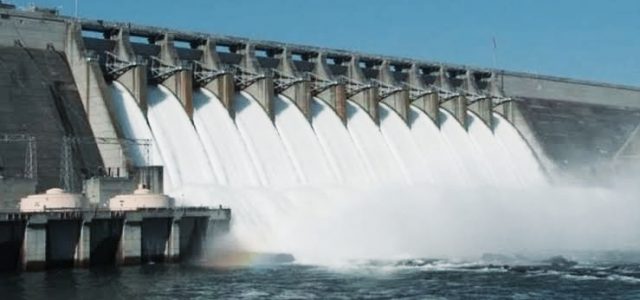Nigeria is one of the Africa countries known to have a lot of tourist centres. One could now be inquisitive to ask if dams are one of such and if yes, where are they situated. Hence, this post tends to examine ‘All Dams in Nigeria and their locations.
A dam is a structure built across a river or stream to hold backwater. People have used different materials to build dams over the centuries. Dams are built to provide water for human consumption, for irrigating arid and semiarid lands, or for use in industrial processes.
They are used to increase the amount of water available for generating hydroelectric power, to reduce peak discharge of floodwater created by large storms or heavy snowmelt, or to increase the depth of water in a river in order to improve navigation and allow barges and ships to travel more easily. Dams can also provide a lake for recreational activities such as swimming, boating, and fishing.
Feature of Dams
A typical dam consists of the heel, toe, freeboard, spillway, galleries, sluiceway, abutment and diversion tunnels.
Heel: contact point with the ground on the upstream side (reservoir side).
Toe: contact point with the ground on the downstream side.
Freeboard: The vertical distance between the reservoir water surface and the top of the dam.
Spillway: A drainage pipe that could discharge excess water from the reservoir to prevent overflowing of the dam.
Galleries: Rooms constructed for regular checks and repair operations. They are located within the dam.
Sluice way: A channel with gates to let rubbish, excess soil or mudflow out from the reservoir. This feature could also reduce the pressure on the dam. This feature locates at the ground level of the dam.
Abutment: the sides of the hills or valley where the whole dam structure rests on.
Diversion tunnels: These features are constructed before the construction of the dam. They help to divide the river stream and keep the river bed dry in order to provide a working space for the dam.
Depending on the location and also the use of the dam, characteristics of the dam could vary and a few extra features could be added to provide services.
- Read Also: Best Beach Resorts in Lagos
How Many Dams Do We Have in Nigeria
All Dams in Nigeria And Their Locations
Sequel to the above, one could guess the extent to which dams are important. How many do we have altogether in the country? How can we locate them? This amongst others will be highlighted below; all dams in Nigeria and their locations
1. Gusau Dam, Sokoto River, Zamfara State
Location: North-WestSurface area hectares: N/A
Usage: For Water supply to neighbouring communities and cities.
- Read Also: Cheapest Dog Breads in Nigeria
2. Bakolori Dam, Sokoto River, Sokoto State
Location: NorthSurface area hectares: 8,000 hectares
Usage: Mainly for Irrigation
3. Kafin Zaki Dam, Jama’are/Bunga River, Bauchi State
Location: North-EastSurface area hectares: 120,000 hectares
Usage: For Agricultural Irrigation and possible use for hydroelectric power generation
4. Kainji Dam, Niger River, Niger State
Location: Central-Nigeria Surface area hectares: 10 kilometres
5. Challawa Gorge Dam, Challawa River, Kano State
Location: North-WestSurface area hectares: 3,857
Usage: Power generation.
6. Tiga Dam, Hadejia River, Kano State
Location: North-WestSurface area hectares: 178
Usage: Hydropower generation.
7. Jebba Dam, Niger River, Niger State
Location: North-WestSurface area hectares: not known
Usage: Hydroelectric Power Station.
8. Dadin Kowa Dam, Gongola River, Gombe State
Location: North-EastSurface area: 29,000
Usage: Serves as drinking water but is also used for irrigation and hydropower generation.
9. Ede-Erinle Reservoir, Erinle River, Osun State
Location: South-West
10. Asejire Reservoir, Osun River, Oyo State
Location: South-West Surface area hectares: 2369
Usage: Water supply.
11. Goronyo Dam, Rima River, Sokoto State
Location: North
Surface area: 20,000
12. Kiri Dam, Gongola River, Adamawa State
Location: North-EastSurface area: 11,500
13. Ikere Gorge Dam, Ogun River, Oyo State
Location: South-WestSurface area: 4,700
Usage: Planned to be used for generating electricity, water supply, and irrigation purposes.
14. Jibiya Dam, Gada River, Katsina State
Location: NorthSurface area: 4,000
Usage: Irrigation and water supply.
15. Oyan River Dam, Oyan River, Ogun State
Usage: Water supply to Lagos and Abeokuta.
16. Shiroro Dam, Kaduna River, Niger State
Location: North-WestSurface area: 31,200
Usage: Generation of power.
17. Obudu Dam, Cross River, Cross River State
Location: South-EastSurface area: N/A
Usage: Fishing, tourism, Irrigation and recreation functions.
18. Jabi Dam, River Jabi, Abuja
Location: NorthSurface area: 4,000
Usage: Artificial reservoir for water supply and fishing purposes.
19. Zobe Dam, Karaduwa River, Katsina State
Location: NorthSurface area: 8,000
Usage: hydroelectric power generation and irrigation purpose.
- Read Also: Banks That Do National ID Card in Lagos
Conclusion: All Dams in Nigeria And Their Locations
Conclusively, you should note that there is a slight difference between reservoirs and dams. A reservoir is a lake that is created by a dam artificially while a lake is formed naturally without the need for a dam. With this, we have several other dams which are not all that popular.
- CAC Accredited Agent Registration 2025: Online Requirements - January 15, 2024
- Best Coding Schools in Lagos 2025 - October 23, 2023
- How AI Technology Plays a Role in Education & Business - August 25, 2023


Great